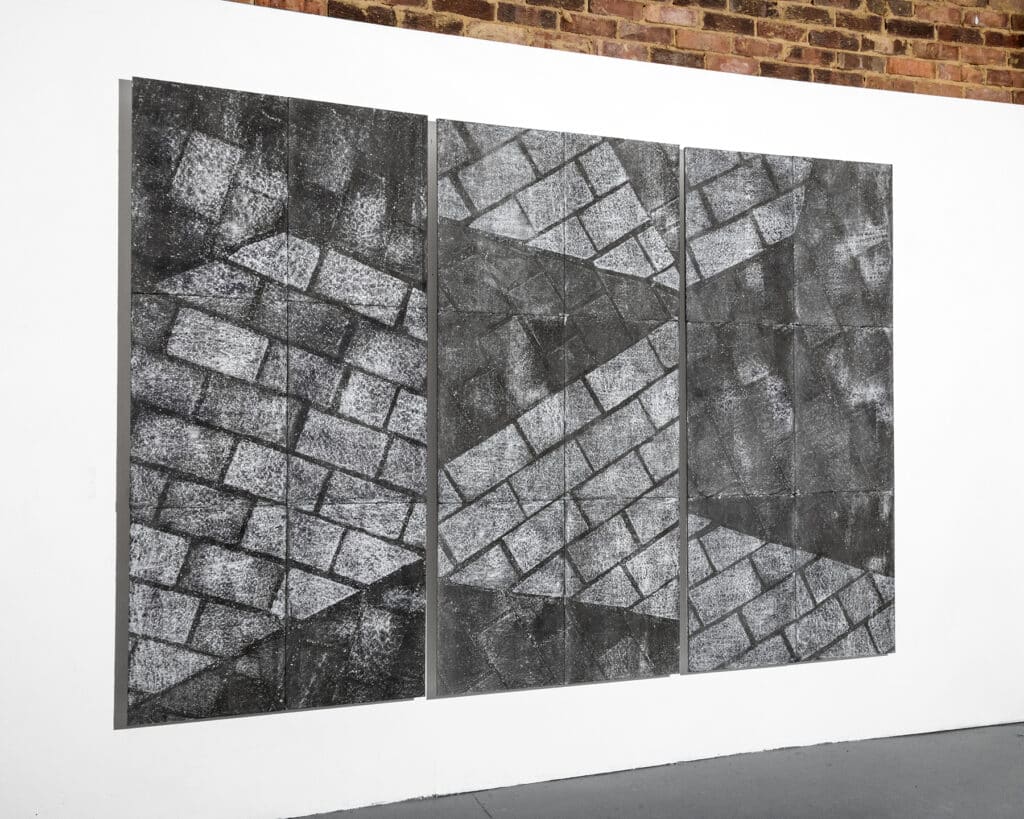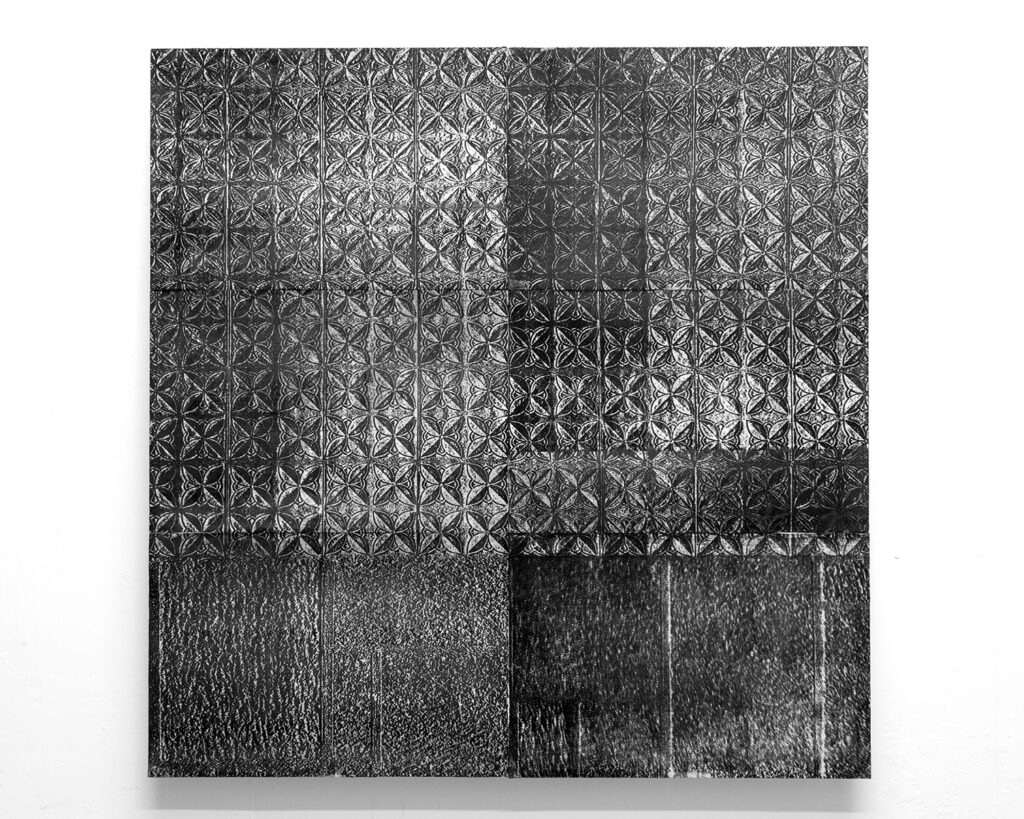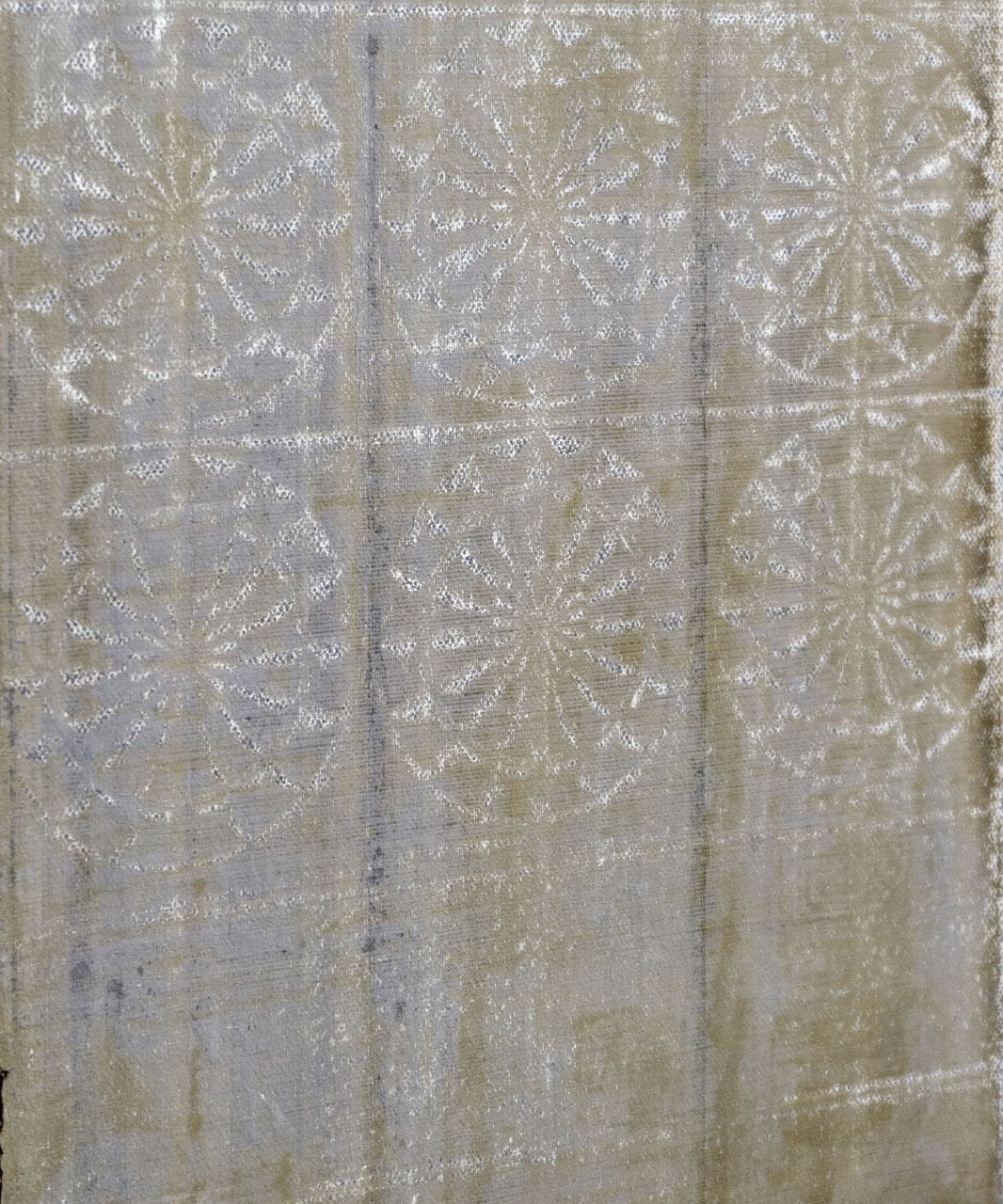Place and Displacement: Rubbings from Architecture

The process of making a rubbing transcends the traditional boundaries of architectural draughtsmanship and illustration. A rubbing is made by placing a sheet of paper over an object or textured surface and burnishing its surface with a drawing medium such as graphite or charcoal. Many of us might associate the process with gravestone or brass rubbings from our childhood. Making a rubbing can be spontaneous and modest in its means, without a high level of technical expertise, combining elements of drawing, printmaking and sculpture. A rubbing, in contrast to traditional architectural illustrations or photography, makes the surface of architecture visible and highlights the scale of the body as a measure of our built environment, revealing how architecture can be experienced both visually and by the body.
Rubbings can be theorised in terms of the dream (the Surrealist unconscious), the trace (the mark, the evidence, action or event), the phantom (the elusive and intangible) and the memory (to claim and preserve). Rubbings were popularised by the Surrealists, who in the early twentieth century adopted methods of art making that freed the mind from conscious intention by employing automatic ways of rendering an image.
My engagement with rubbings began with a visit to the exhibition, ‘Apparitions: Frottages and Rubbings from 1860 to Now’, which was organised at the Hammer Museum in Los Angeles in 2015. This exhibition was the first to survey the technique of rubbings, a technique that is amongst the most ancient and enduring drawing practices. This exhibition inspired me to incorporate the process of rubbings into my practice as a strategy to reveal my tactile and visual experiences of architecture.


The rubbings are made on-site by taping paper to the exterior of a building and burnishing its surface with charcoal, pastel or graphite. The result is both an impression of the textural information of the surface of a building and a record of the gestures necessary to make the rubbing. Embedded within the form of the rubbing are the time and the material of its making. Together these constitute a mediated experience of the buildings I encounter. The resulting image gives the work a visual density and an opacity that prolongs the act of recognition, while the accreditation of time invested in the making of the works imbues them with a presence and gravity. I use rubbings as a way to have contact with these buildings, to produce a trace or a record. These are tactile or haptic drawings that rely on touch rather than sight, sensation rather than replication. This process, for me, questions if architecture can exist outside of itself in representations such as photographs or texts, or it exists only as concrete matter, as a place we can touch and see.
The removal of the rubbing from the site makes it both an image and an index of my contact with architecture. Rubbings oscillate between presence and absence, where elusiveness and intangibility become part of how we approach the notion of what was an object. Its status, therefore, is in-between object and image. This process emphasises both the physical substance of architecture and its subsequent surface representation as an image. This is complicated when looking at the rubbings from various distances. From further away they may appear like a building, wall or structure; upon closer inspection, they may appear as a formal or abstract drawing. The rubbings I make are a strategy to engage directly with the buildings I come into contact with while living in a city. While it is unusual and uncommon to touch buildings, this process reveals the lack of physical contact in our experiences of cities. This process translates three-dimensional architectural surfaces into two-dimensional impressions, engaging with the languages of drawing, printmaking and architecture. This creates a dialogue between these mediums and investigates the space in between.

In the final stages of my process, I use a laser-cutting machine to engrave into the rubbings. In spite of my dedication to the process of rubbings, I am also interested in disrupting the singularity of their representation. Through this intervention, I attempt to move away from the rubbings being experienced simply as a reproduction of a particular object or textured surface. The laser cutting inscribed into the surface of the rubbings is sourced from a photograph of the section of the surfaces I take rubbings from. This photograph of the facade is then traced in Adobe Illustrator to produce a vector file. The raised impression of the surfaces produces the lines of the trace, and this is then etched into the rubbings. The laser-cut mediates the photographs I take through a process of digital transformation and medium translation, and brings another tactile representation of architecture. I see a connection between the trace made by making a rubbing and a trace made of Illustrator from a photograph. The work, when laser-cut into, can be experienced as simultaneously abstract and real, detached from and in direct contact with architecture.
I work with different facets of drawing in my work, from the tactility of a rubbing to the technological apparatus of a laser-cutting machine, engaging with architecture through touch, contact and mediation. Through the layering of rubbings and laser-cut engravings, I attempt to create a tension between mediums and processes that are both embodied and tactile as well as distant. Through this, my work aims to question and open up forms in which we can experience architecture, whether through mediated visual representations or our experiences walking in a city.

Rubbings represent architecture far more intimately than a photograph or a more traditional form of architectural drawing. For one thing, you know they are of a one-to-one scale and have been made by having direct contact with a building. This situates us in a specific moment in time and place. To me, this physical record is much more emotionally charged than a photograph or an architectural rendering, which by their very nature implies a distancing from the subject. As Walter Benjamin states in The Work of Art in the Age of Mechanical Reproduction: ‘For the first time in the process of pictorial reproduction, photography freed the hand’. Rubbings bring touch back into the way we think about architecture, offering an alternative to the role of looking and observing found in more traditional forms of architectural illustration and representation. Therefore, they can be seen as a more essential or authentic record of the built world around us. As with infants, touch comes before sight: you need to touch the world to decide it is there, your eyesight is yet to be trusted.
Sam van Strien is an artist based in London: www.samvanstrien.com
This text was entered into the 2020 Drawing Matter Writing Prize. Click here to read the winning texts and more writing that was particularly enjoyed by the prize judges.
